Interview with Jonathan Brill by Ryszard Kołodziej
After your webinar at Brightline, we started to discuss the acronyms ABC and LUCK from your book[1]. Shall we start our conversation with them?
We’re clearly moving into a world that is more disruptive and where there’s more randomness in our businesses and our lives. And that means that we need to think differently about how we interact. With the world moving forward, instead of focusing first on optimization and efficiency, we need to focus first on resilience and flexibility because when you do that, you create dramatically better outcomes over time.
There are three basic things that you can do to increase your resilience and flexibility. The first and most important thing is to become aware of the range of things that are possible. If you believe that the range of things that are possible are only those that you’ve experienced in your lifetime, then we’re in for a big Surprise!
Most of us hadn’t experienced a pandemic, and for most businesses, it was a shock. Most of us hadn’t experienced Russian aggression in Europe during our lifetimes, and it was a shock. But these are things that are historically known. These are historically consistent disruptions. Like inflation, energy shocks, changes in monetary regimes, geopolitical tensions.
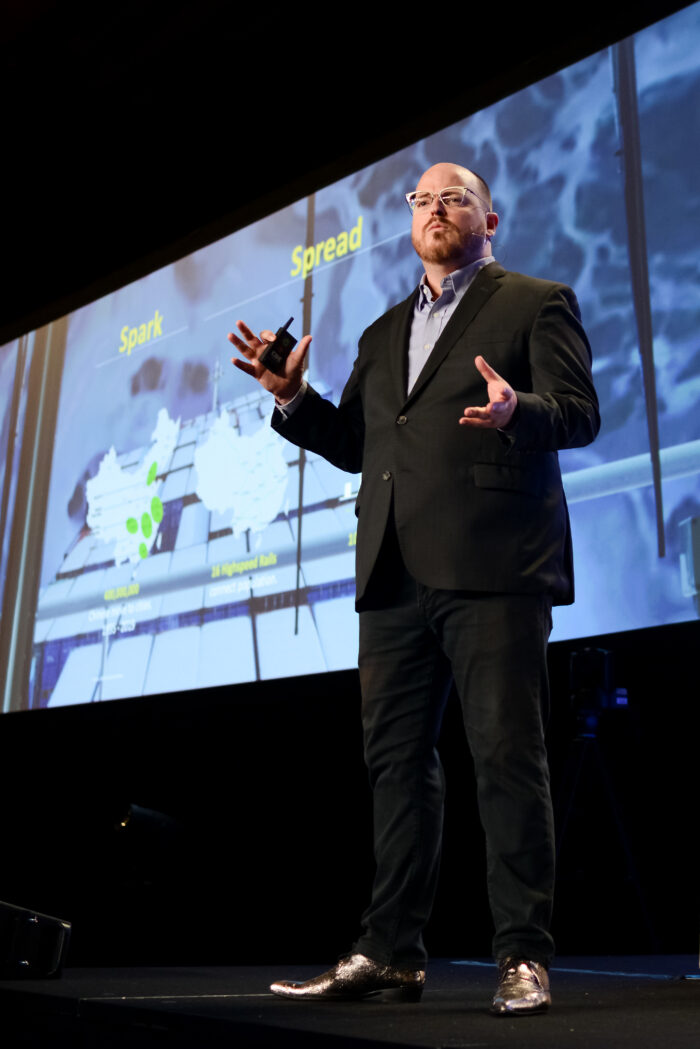 Fot. Jonathan Brill's archive
Fot. Jonathan Brill's archiveThese are all things that we knew and that we know happen on a relatively regular timeline. And so, when we look at the future, we need to first focus on Awareness. What are those things that we know can happen that we might not have experienced yet? And what happens when they collide?
No one really expected World War I. It was the result of multiple overlapping issues colliding all at the same time. Tensions in Central Europe, lack of understanding about how decisions were made in the Russian military by the nobility, lack of understanding about the timelines that the French and the Germans had to make decisions because of changes in rail technology. This thing that should have been an unfortunate assassination of the Archduke resulted in this massive world war. All of these things were knowable. None of them individually would have caused it. It was the collision of all of them.
If we want to become aware of the change that we face, we need to be aware not just of the individual headlines in the newspaper, we need to ask what happens when that ink collides creating something massive and unmanageable. We get more connected, the World moves faster, and things become more complex, for that reason we’re going to see more and more of these collisions.
The second thing is Behavior. When we think about the idea that the world is getting more disruptive, we need to evolve the way that we look at the World around us, to evolve the way that we interact with it.
We need to ask what are those behaviors in our businesses and in our lives that help us to increase our resilience and to increase our adaptivity as well as ability to innovate. And there are a range of things we can do, but they all come down to increasing the executive decision making at lower levels in our firms, increasing our ability to think holistically about risk management, not just the: “what’s the risk on my project”, but how does that impact on the rest of the firm and how does risk and the rest of the firm impact my project.
So it’s bringing people lower in the organization, a level of executive decision making and executive awareness that we traditionally haven’t done. As we see AI in the next level of digital transformation, what we’re going to discover is that people much lower in the firm have to make much more complex decisions. So this isn’t an option anymore. This is how we need to operate. Increasingly in the next three to five years.
The last piece is about Culture – how do you create a culture that focuses on resilience, adaptability, innovation, and the World of increasingly constant change and increasingly constant disruption.
It comes down to something that I call strategic LUCK. This idea that we can focus on doing our things and trying to be successful alone by working harder, or we can work in knowing the objective clearly, or we can work together to feel our way through an increasingly ambiguous future.
And there are four things that you can do if you believe that moving into this ambiguous future is our reality and that we need to focus on that is the priority in terms of how we operate and how we build our teams, as opposed to the exception.
One, creating a culture where instead of avoiding help and avoiding discussing weakness, we create a culture where we leverage help and we create psychological safety. The second piece that I think is dramatically different than most of us have seen in large firms for the last 40 years, the entire concept of scientific management is built around this idea that we decrease uncertainty.
In a world of change, actually, what you want to do is increase randomness. You want to increase the random things that happen in your life. You want to increase the random things that you access in your business. We used to ask people to sit at their desk and work harder. And that’s how we were going to be more productive.
Often the answer is to ask people to leave their desk, leave the office, take more time off, go see more of the world. And what we’re seeing is that often increases productivity. What we’ve seen in many companies over COVID is that shifting to a four day work week created no decrease in productivity and in many cases caused an increase in innovation.
What happens if instead of just focusing on our KPIs based on how many hours we work, how much work we get done, we start asking how much innovation and how much new value do we add? It’s a different way of looking at the world. So we talked about Leveraging help and Unexpected connections.
The next piece is about Controlling disruption. If you go and you ask for a lot of help, and as you increase randomness dramatically in your life, new things become possible. You dramatically increase your potential, but the challenge with this approach is that you also increase the probability of disruption. But we can deal with that. And we’re really good at it. That’s what scientific management is for. What’s interesting is that we increase the amount of the good kind of disruption, the kinds where you get product market fit before you expected, but where the large customers appear that you don’t know how to service yet.
Those are the kinds of disruptions that are truly dangerous for business because we don’t have the processes in place to take advantage of it. And so we need to think differently about how we control that kind of disruption because we can’t just avoid it. Those types of moments we call in the US hockey stick moments, because of the size of the market or the size of the value of what you do increases exponentially. Those are going to increase and those are going to be the way we create growth in the future. When you leverage help and unexpected connections, and you control disruption, the next piece is instead of focusing on what’s in front of you, paying attention to Knowing what’s missing.
In businesses, we’re so trained as project managers to focus on the next thing. It’s kind of the idea of sequential management. The problem is in a world where you don’t know what’s next, and you don’t know why it’s happening, that doesn’t work very well. When you leverage help and unexpected connections, you become confident that you can work with the disruption, that you can control the disruption instead of avoiding it.
You start to have more and more models of what’s possible for you, what’s possible for the future, what might be happening then to those around you, and then to your competition. And so you naturally start to focus on not what’s in front of you, but what’s missing. Where are those places that no one else is playing, where you can create value at.
Where are those small things that might cause an insight about what’s actually going on and how to create leverage that no one else is focusing on because they’re just working harder and harder trying to move forward without looking around. That I believe is how you create strategic LUCK.
In the book of PMI and Brightline together with Thinkers50, Building Resilient Organizations, you talked[2] about transforming threats into opportunities. Can you explain how we can actually do that?
The big thing that we miss is the relationship between risk management and risk taking. In the Western culture, we tend to avoid risk. We step away from it. We say that that doesn’t seem like a thing I want to do.
Some say no risk, no fun.
Well, I’m an inventor by training and for me, it’s all about innovation and risk taking. But what people often miss is the reason I’m able to take the risks is because I’m profoundly good at risk management and decision making under uncertainty. That is at the core of what I do.
In Chinese, the word for crisis is WEIJI, and WEI means danger. JI means something like opportunity. My point is that you can look at a crisis as a thing to avoid, or you can look at it as an opportunity when you’re prepared.
Think about your family doctor. They probably make a decent living. Now think about your heart surgeon. They make a great living after 20 years. Do you think that your heart surgeon knows dramatically more about what they do than your general practitioner? Probably not. And yet they make dramatically more money than your general practitioner. Why? It’s because in those moments of high risk, you’re willing to pay excess rents. You’re willing to pay a high price for an expert to come in and solve the problem.
If you want to make large amounts of money, there are two ways to do it. One is to do a lot more low value work than others. It’s a hard thing to do sustainably over time. The other is to be able to take risks that others can’t. Your general practitioner, your family doctor would never do that heart surgery. They’re not set up. They’re not willing to take that risk. And yet it’s something that the heart surgeon does every single day. So, it’s a low risk activity, a comparatively low risk activity for them. If you want to create an outsized opportunity for yourself, get comfortable taking risks that others can’t. That’s the nature of innovation.
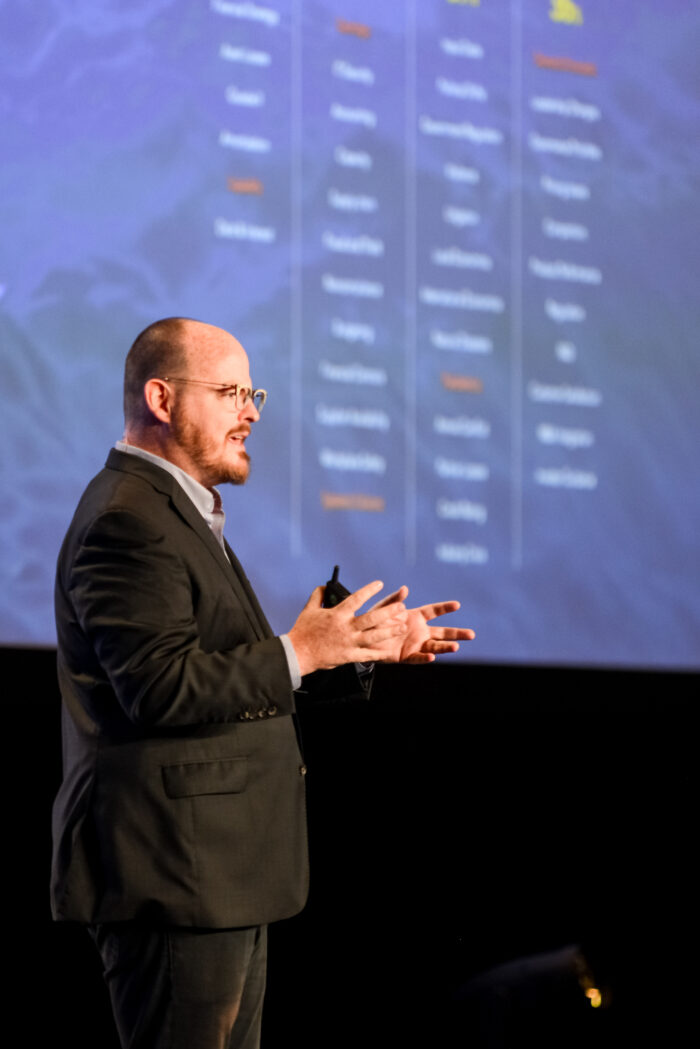 Fot. Jonathan Brill's archive
Fot. Jonathan Brill's archivePMI together with Brightline are working to develop models of transformations. How can we encourage companies to initiate a mindset shift towards embracing transformation as a fundamental part of their development strategy?
There are two interrelated things you can start to foster a more innovative mindset, all centered around how you give directions. In the U.S. special forces, we use what’s called an “op order”, which outlines the goal, how to respond if the goal changes, but not how to achieve it. It sets the parameters.
So, when giving an order, it’s good to outline: the current understanding of the situation, potential changes, the organization’s goal, the individual’s goal, the acceptable range of risk (“risk band”), your subsequent steps, and what to do if things go wrong or if you’re not around. This way, I haven’t told you how to do your job but provided the framework you need to innovate towards the goal.
Effective order-giving boosts innovation. A critical aspect is the idea of risk bands. We say we want innovation, but without specifying the minimum risk we’re willing to accept, it’s unbelievable. You need to show it’s going to be a problem when taking too little or too much risk, with assurance of protection within that band. This clarity fosters innovation and psychological safety, a clarity often missing in our experiences in business.
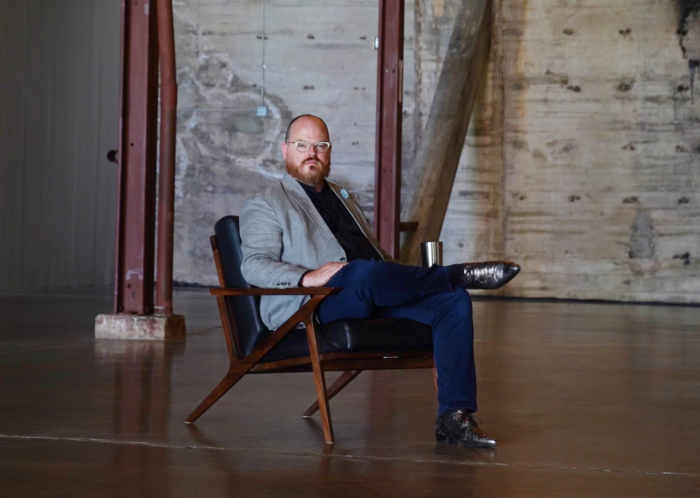 Fot. Jonathan Brill's archive
Fot. Jonathan Brill's archiveConsidering the insights from the Generative AI Survey[3] by Artefact Gen AI with Google Cloud, showing significant expectations around generative AI, 61 percent of respondents claim that generative AI will lead to reconsideration of existing projects, 30 percent believe it will influence strategy and business models and 26 percent think it will influence people. How would you suggest organizations begin practical AI transformation?
I’m maybe gonna avoid the question a little bit, but for a good reason. The first thing is, we had a pretty good idea three or four years ago about what this could look like in terms of innovation and efficiency gains in our organizations.
We’ve kind of known for about 10 years, or since about 2018, what the world would look like in 2028 or 2030 in terms of labor efficiency. What we haven’t come to grips with is that if we’re going to create these efficiency gains, we need to re-architect our firms in some pretty profound ways.
So, we’re going to have to dramatically change the way we do our architecture, our culture, and our communications. Our “command, control, communications” – what we call in the military “the three Cs.” And we’re looking at this in bits and parts right now; when we think about this next range of transformation, we’re thinking: “We’re going to do this a little better, we’re going to add some AI sprinkles into some stuff.”
The reality is, this is a profoundly different way of thinking about business from the staff and line model of firms that we’ve been using since the industrial, since the rail revolution in the mid-1800s. This is a profound shift. If companies are unclear about what it means to give everybody in their organization access to all of the information about their organization, the tools to reason against it, and the software processes to do the jobs of many people, we aren’t gaining the benefit of these technologies. I look at my work as a writer, and I’ve watched ChatGPT move what should be a 30-hour project into a three-hour project, literally a 90 percent delta.
That won’t be true for all jobs. That’s not true for all writing projects. But it’s what’s possible when we think about these technologies deeply. So, we need to start thinking about what it means to have massively empowered people, people who can do 900 percent more work, people who can free up that amount of time, free up effectively a workweek.
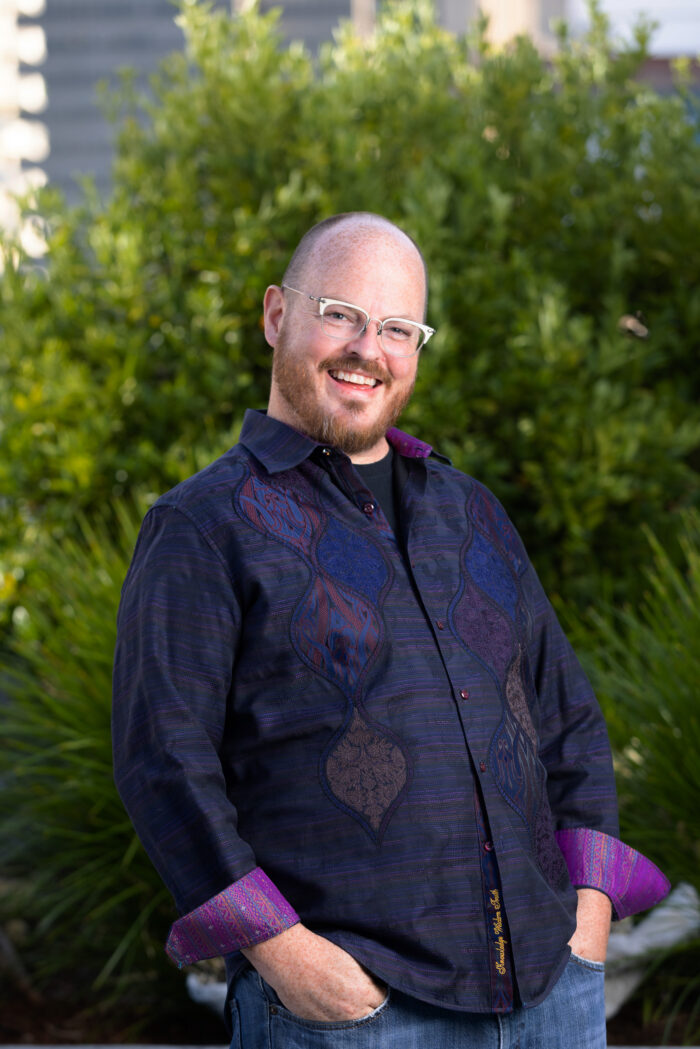 Fot. Jonathan Brill's archive
Fot. Jonathan Brill's archiveWhile still writing that article, what does that look like? How do we interact? How do we collaborate? What does it mean for middle managers? And this is the one that really interests me: so much of middle management is about managing communication across the organization, between silos of the organization.
In a world of ChatGPT and digital transformation, that function goes away. What does that mean? To have a mid-level manager in your finance department who really understands what’s going on in operations, who really understands what’s going on in the supply chain, who really understands what’s going on in sales operations, and is able to reason against it as opposed to just making decisions about what happens when.
The whole organization is able to do this. And it’s a very different way of looking at the world than having a couple of senior leaders making decisions and telling the company what to do. That’s what we’re moving into. That’s what these tools enable. And for the companies that celebrate this change, they will see dramatic efficiency gains. And for the companies that fail to, I don’t know what happens next. I think it’s going to be a dramatically better world for the people in the organizations that lean into this, and it’s going to be a challenge for those who don’t.
Can consistent values and principles offer stability in our ever-changing world, for both individuals and organizations? With constant shifts in strategies and structures, are there any universal values that should guide us, irrespective of these changes?
I aspire for a world where most people access opportunities, and fewer face suffering, reflecting a utilitarian view. But defining ‘good’ and unacceptable suffering varies by individual perception. While I support value-driven organizations for their appeal to like-minded individuals, I’m skeptical about universal values for global entities, though they work regionally. My perspective, often expressed in online debates, acknowledges the efficacy of region-specific approaches, contributing differently but positively globally.
Would you say it’s related to cultural contexts?
The stability concept ties to cultural and economic homogeneity. Switzerland’s uniformity differs from Russia’s diverse cultural conflicts, making a one-size-fits-all approach impractical. Different global strategies may optimize wellbeing, a view not universally accepted. Pursuing broad, non-specific values can lead to ineffective platitudes, as seen in many corporations’ value statements.
At the end of our conversation, I would like you to invite our readers to your keynote speech at the opening of the 18th International Congress of PMI Poland Chapter. Could you do this for us, please?
I’m excited to come and speak to the PMI Poland Chapter in just a few days here on the 23rd of November, and I can’t wait to continue this conversation.
[1] J. Brill, Dzikie fale. Jak budować biznes gotowy na wszystko, PWN, Warszawa 2023
[2] Jonathan Brill, Risk Management is the Key to Innovation in: Building Resilient Organizations, Project Management Institute, 2022
[3] https://report.artefact.com/l/597421/2023-06-27/j2k6xb
In his talks, he brings you to the frontlines of tomorrow and shows you how to turn disruption to your advantage. Drawing from a $15 Million research program and his international bestseller, Rogue Waves, he shares how the collision of technology, geopolitical, economic and societal trends will impact your specific audience. Brill then unveils practical, innovative tools to gain from the change. He makes your future concrete with relatable stories that inspire awe, action and a new comfort with uncertainty. JP Morgan’s Head of Learning and Development said, “our executives walked away changed”. You will too.
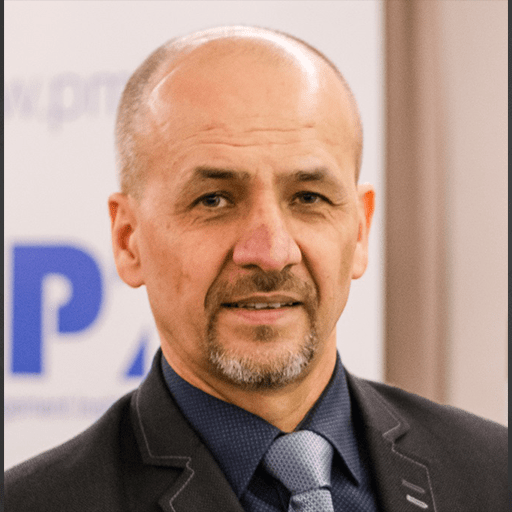
[ENG] Manager, business consultant, expert and lecturer in strategic management and project management holding an MBA title, PhD in physics, PMP and PMI-ACP. Operating within the IT, medical, and consulting industries, supporting both business and non-profit organizations in developing strategies, transformations, and enhancing project management maturity. A proponent of project and organizational agility, serving as a board member of PMI Poland Chapter responsible for professional development, supporting Transformation Team, Disciplined Agile Team, Public Admin. Team and others.
[PL] Menedżer, konsultant biznesowy, ekspert i wykładowca z zakresu zarządzania strategicznego oraz zarządzania projektami z tytułem MBA, doktoratem z fizyki oraz cert. PMP, PMI-ACP, działający w firmach branży informatycznej, medycznej i konsultingowej. Wspomaga organizacje biznesowe i non-profit w wypracowaniu strategii rozwoju, transformacji oraz podnoszenia dojrzałości w obszarze projektowym. Propagator zwinności projektowej i organizacyjnej. Członek zarządu PMI Poland Chapter ds. rozwoju profesjonalnego, wspierający m.in. zespoły: Transformation Team, Disciplined Agile oraz Admin. Publicznej.